Last Updated on March 20, 2023 by PowersToTravel
After we left the Voronet Monastery, we headed out to Moldovita, but in the process we passed several modern churches. It was amazing to me that the tradition of painting monasteries carries on today in such a flamboyant way. In many cultures today, the church buildings are decaying, churches are turning into condominums, but here in the rural districts of Romania, the modern church architecture is thriving.
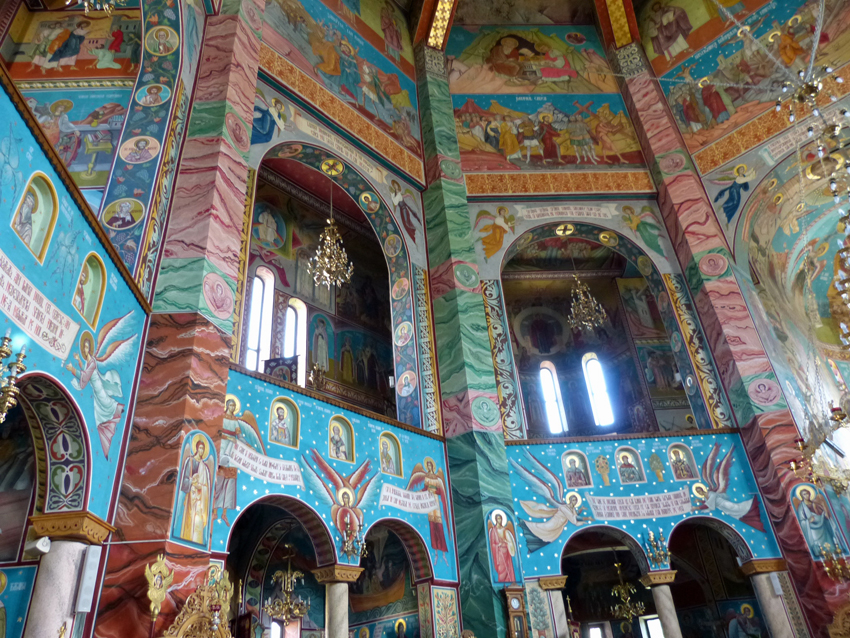
As I questioned earlier, is this due to modern zeal or a focus on the tourist dollar? Or, perhaps a renewed cultural pride? Our guide told us that we should notice that there are so many old people in Maramures and Bucovina, but yet the homes look so neat and refurbished. These rural areas shouldn’t be considered poor in an ordinary sense. What is happening culturally is that the younger generation has left the area, moved to Western Europe for good paying jobs, and is sending money home to their parents. These parents are then investing the money in nicer homes.
But where does that leave the churches? Are the parents now investing more money in the churches as well because they may have a traditional view of their support?
And what of the other needs in such a rural area? Are education and social services as well funded?
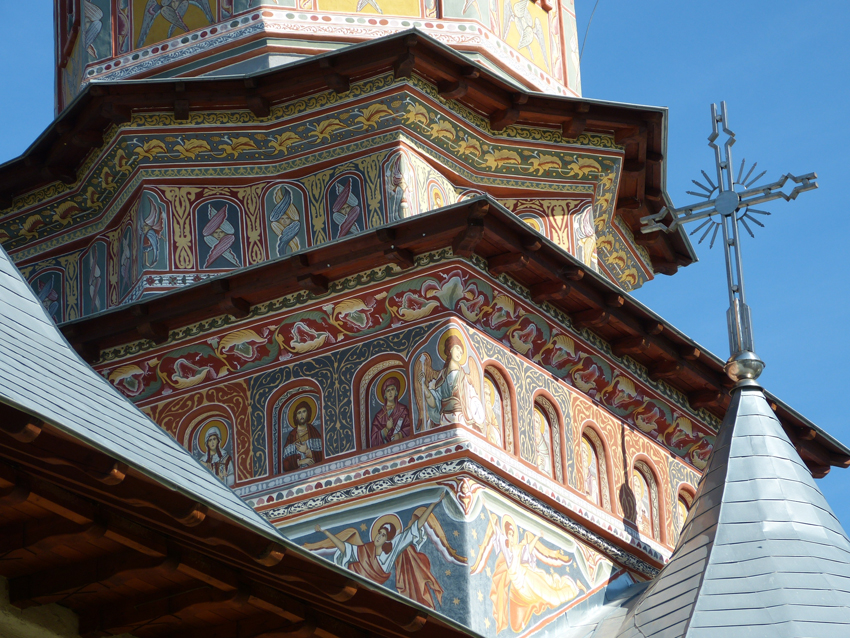
Who knows. Romanians do, I’m sure. We don’t.
But, moving right along to Moldovita.
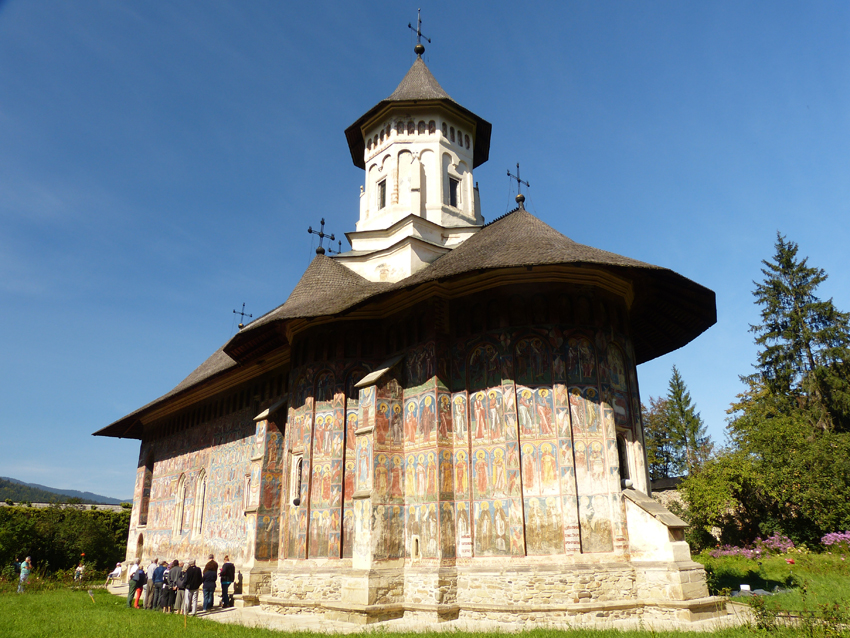
The church is of a similar architecture as Voronet, with the entertaining roof styles and all-over-frescoes.
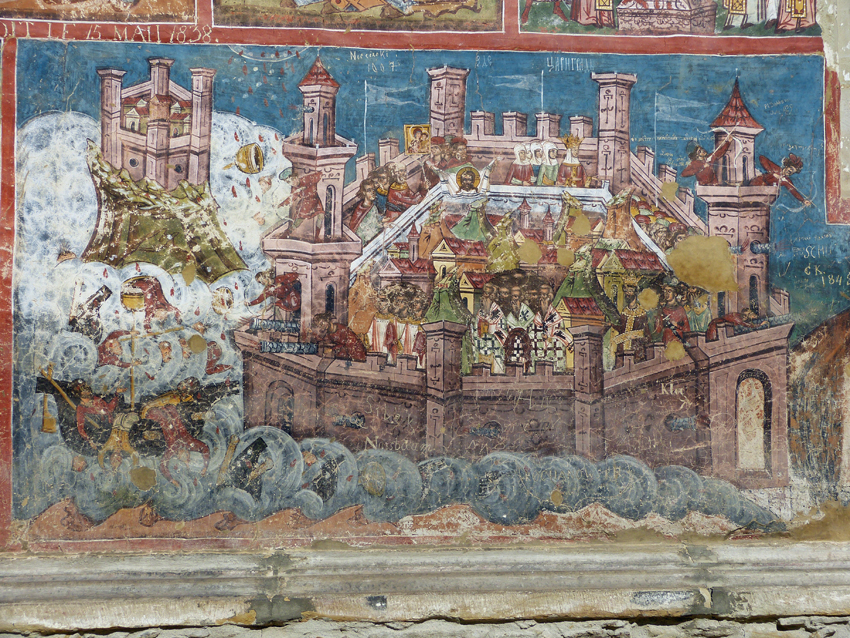
The threat of the Ottoman Empire looms its head here as well. The major story on the exterior walls is the Seige of Constantinople.
This fresco fascinated Greg. From his study of star-shaped, Vauban forts of the Napoleonic era he knows a great deal about munitions and their possible placement in a fort. This fresco was painted in the 1500s before canons were successfully implanted into fort walls. Check out this detail of the tower in the upper right!
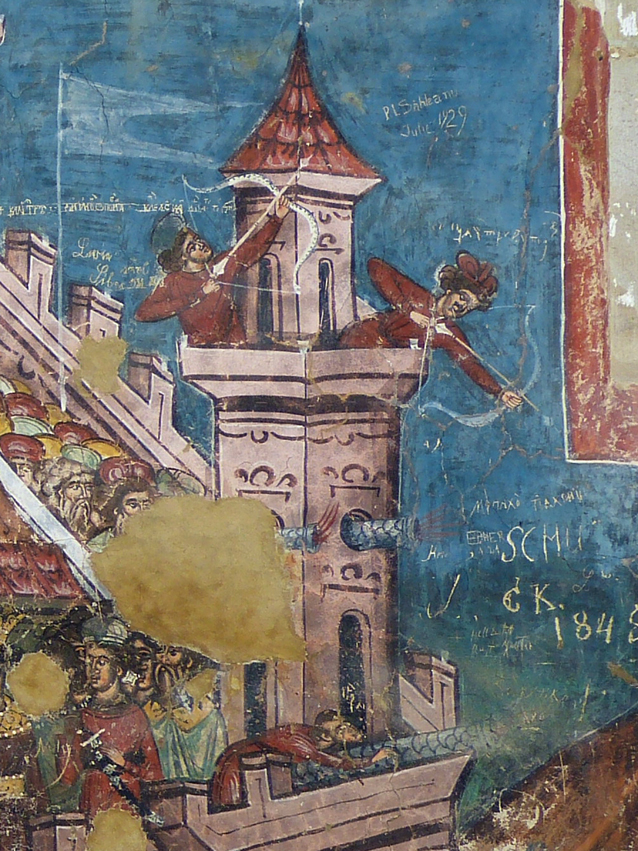
It’s so funny to think about the artists of the day and the liberties they took. (It’s sad to think about the vandals of later days, and the liberties they took – see the 1843 graffiti in the blue background above.)
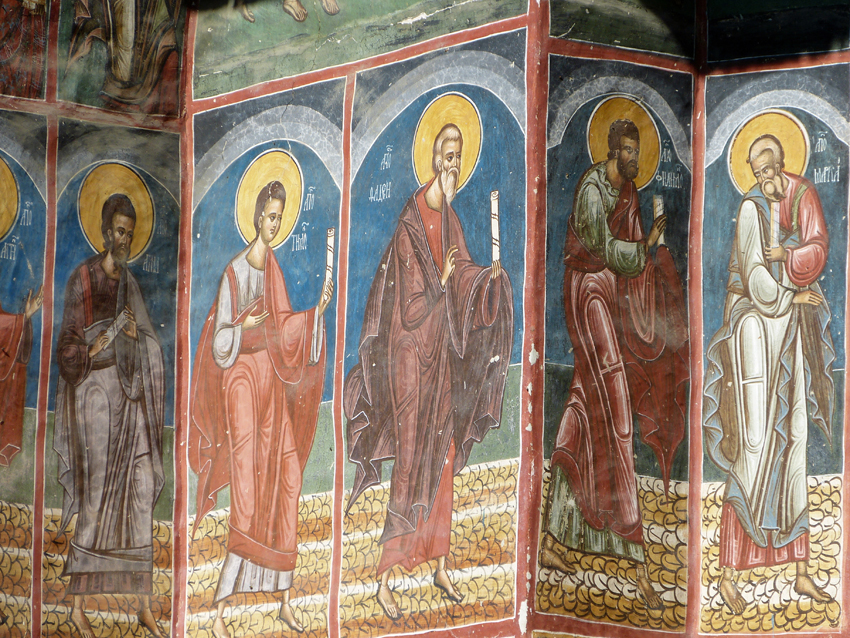
Like Voronet, the saints covered the exterior facade Who are these saints? I haven’t a clue. We were grateful that our guide was able to sense our interest level and know when to lecture more and when to lecture less. We were very interested in the Seige of Constantinople, but less so in each of these guys.
Like Voronet, the blue background predominated. Why is the blue called “Voronet Blue” and not “Moldovita Blue”? I haven’t a clue. We were told this monastery was known for its use of yellow paint, but when I looked at it, I didn’t see it as particularly predominant.
Upon the conclusion of our visit, I decided to use the Ladies’ Room. I laughed and laughed and took out my camera in the stall. That’s a first for me! Even in the Ladies’ Room Moldovita showed its flamboyant color!
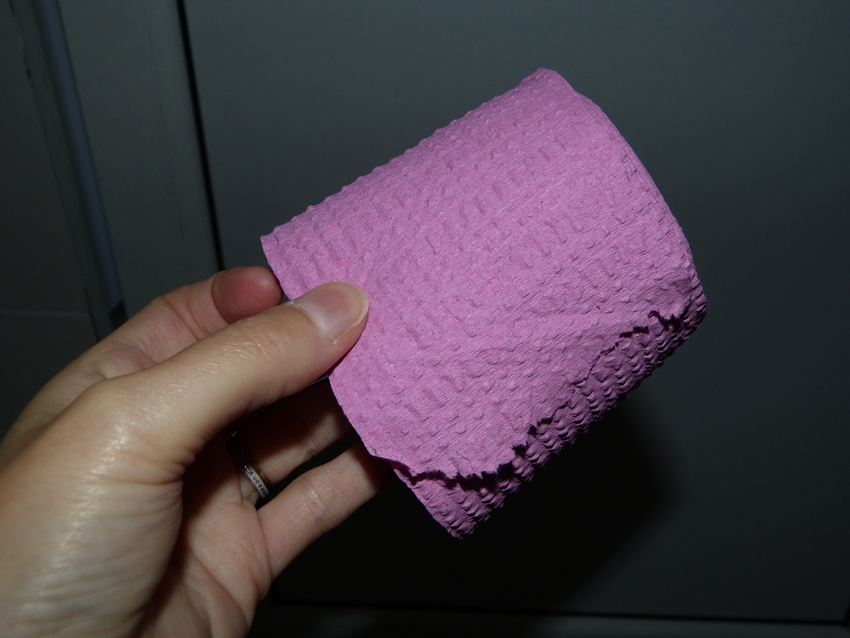
The next step in our Romania itinerary
Day 7 – Sucevita Monastery in Bucovina is still photogenic after lunch
Check out my key Romania article
Romania Travel Blog – Itinerary, Planning and Diabetic Travel Tips





